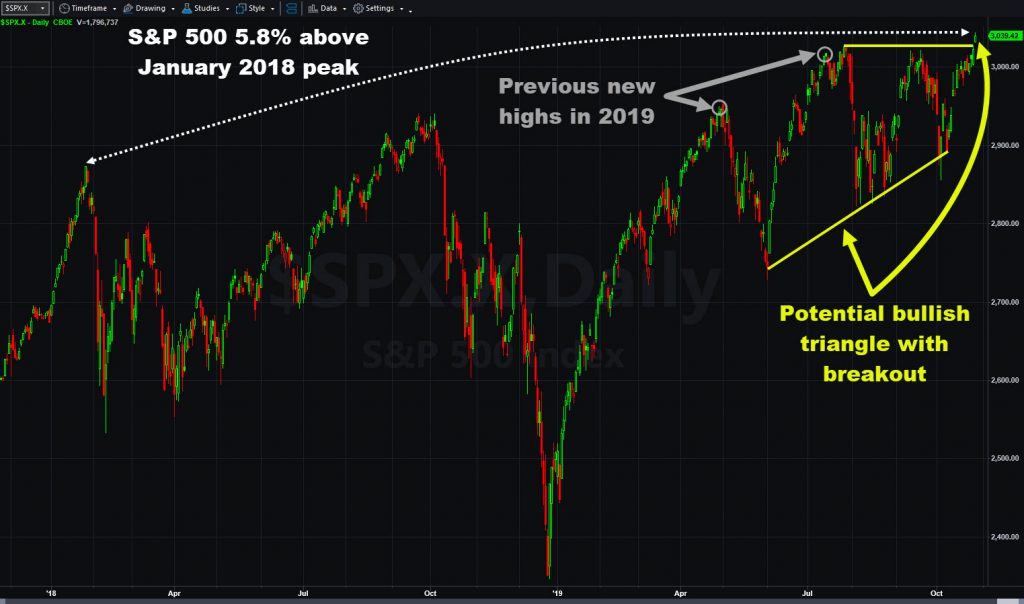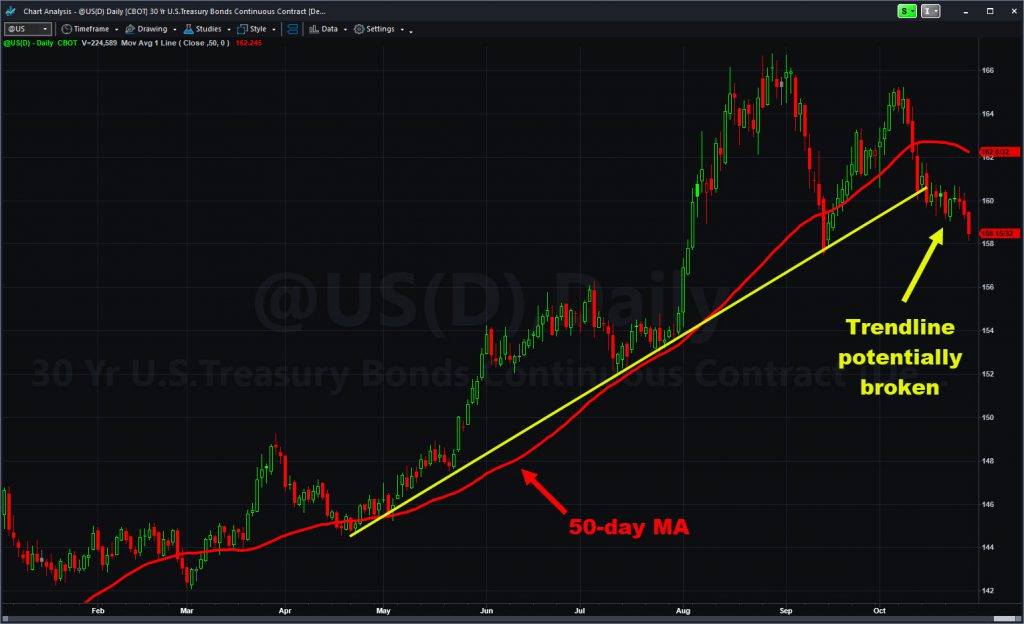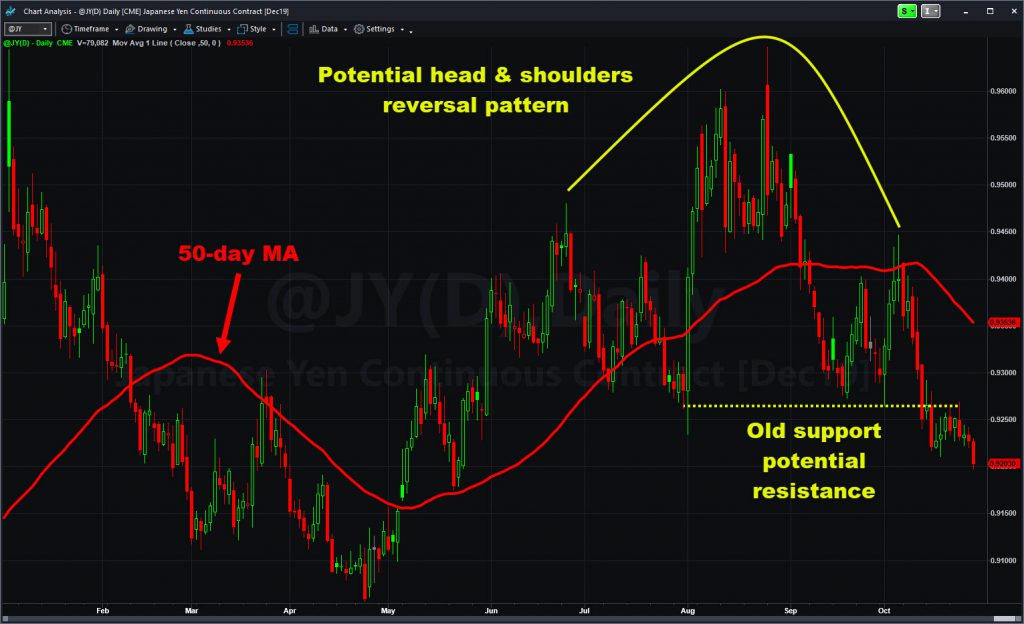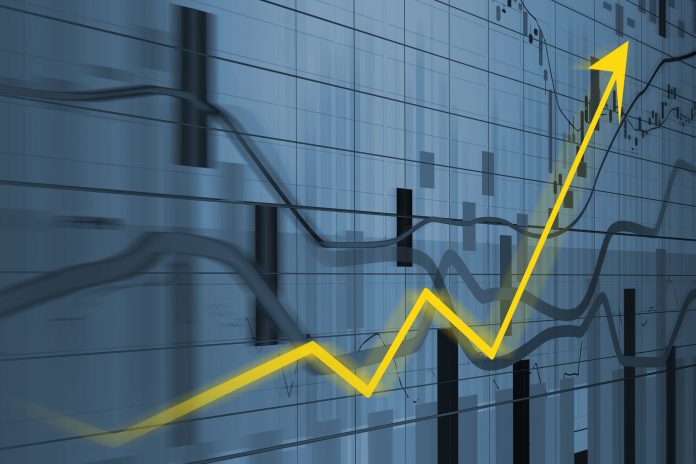The S&P 500 just closed at a new record high, but is this breakout for real? Let’s consider the bigger picture.
First, chart watchers may notice that the index has formed an “ascending triangle.” That’s when its top is mostly flat for a period of time, during which it makes higher lows.
Technicians usually consider the pattern as bullish, with buyers willing to pay richer prices over time. The textbook says that breakouts though the top of the triangle may be followed by rallies. Yesterday looks like a potential breakout.

Second, the S&P 500 has actually advanced very little in the last 21 months. Believe it or not, the index is just 5.8 percent above its January 2018 peak. We’ve obviously had some dramatic swings during that time, but what if they were nothing but consolidation? Without signs of a clear top, classic trend following would look for the longer-term bullish movement to continue.
Safe Havens Under Pressure
Third, and perhaps most important, a fear bubble seems to be melting. In this case, at least two “safe havens” have potentially bearish patterns:
- Treasury bonds futures (@US) have broken a trendline.
- Japanese yen futures (@JY) has a potentially downward reversal.
Both went up when the market went down over the summer, and both generally move in the opposite direction as the S&P 500. Drops in bonds and the yen aren’t a reason to buy stocks. But they can be an inventive to own equities.

One reason is that when investors take money out of bonds, they often reallocate it to stocks. This time you also have the question of the yield curve and banks, where selling in bonds could directly increase earnings in the financial sector.
By the way, this is an example of intermarket analysis. That’s when one chart’s strength or weakness helps confirm activity on another. It’s one of many techniques we owe to Charles Dow.
Seasonality and the News Flow
There’s also positive seasonality, with stocks climbing into yearend in 15 of the last 20 years.
Then consider the current situation. Multiple surveys showed President Trump’s trade war against China spurring fear in the last two months. Unfortunately for the bears, the worst-case scenarios aren’t panning out. And, now another fear has slipped off the radar with Brexit getting delayed until January.

Attention is also shifting toward company news as earnings season enters full swing. This afternoon we hear from Advanced Micro Devices (AMD), followed by Apple (AAPL) and Facebook (FB) tomorrow night.
After that, holiday shopping comes into focus. Retail sales are due on November 15, followed two weeks later by Black Friday. Plenty of big names like Wal-Mart (WMT) and Home Dept (HD) and Target (TGT) issue their results during the same period.
In conclusion, investors need to do their own homework and the market can always offer surprises. But a lot of negativity is fading and conditions may be more positive now. The S&P 500 previously tried to hit new highs in April and July — only to fail. Will the third time be a charm?






















